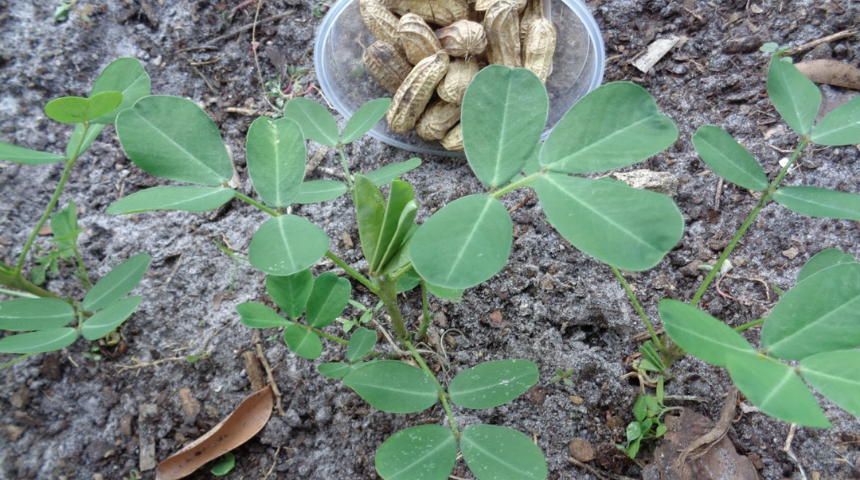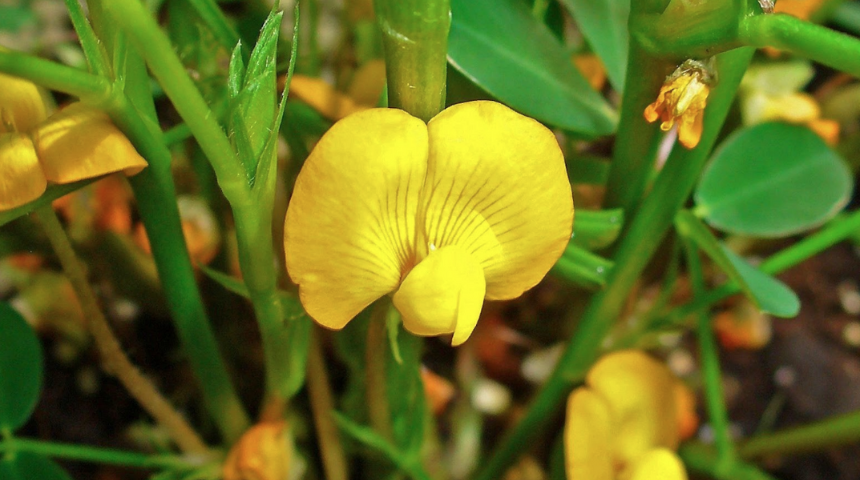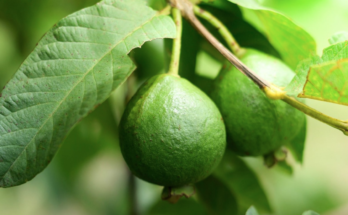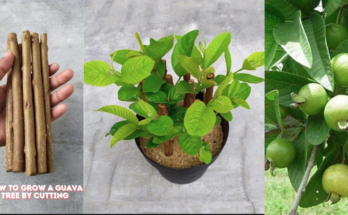Growing peanuts is an exciting way to add diversity to my garden. How to grow peanuts in America, it’s simpler than you’d think. Peanuts thrive with a bit of warmth and plenty of sunlight.
They’re not just a southern crop; with the right conditions, I can grow them in many parts of the U.S. Plus, peanuts enrich my soil by adding nitrogen, making them beneficial for my garden’s overall health.
Peanuts need sandy, well-draining soil and consistent warmth. I plant them after the last frost, usually in late spring when the soil has warmed up.
Starting peanuts is easy, whether I’m planting seeds or using young plants. They love sunlight and need about 120 days to mature. With proper care, they grow well, producing a delicious and versatile harvest.
How To Grow Peanuts In America?
Growing peanuts is a rewarding yet surprisingly simple gardening venture that suits gardeners across much of the United States. While commonly associated with the Southern U.S. peanuts can be cultivated in other regions with the right preparation and timing.
Not only are they delicious, but peanuts also help enrich the soil by adding nitrogen, making them beneficial for crop rotation and future garden productivity.
Let’s dive deeper into each stage, from selecting the best peanut variety to troubleshooting any challenges, to help you succeed with a peanut crop right in your backyard.
Here’s a complete guide on how to grow your peanuts, from planting to harvest.

Types of Peanuts
Types of Peanuts Choosing the right peanut variety is key to a successful harvest. The four main types each bring unique qualities:
- Runner Peanuts: These are the most common in the U.S., especially in the peanut butter industry, thanks to their uniform size and high yield. Their smooth and nutty flavor makes them a versatile option for a range of recipes, from snacks to sauces.
- Spanish Peanuts: With smaller kernels and a high oil content, these peanuts are ideal for roasting. Their distinctive nutty flavor is favored in candies and snacks. Spanish peanuts grow well in dry conditions, making them suitable for gardeners in less humid regions.
- Virginia Peanuts: Known for their larger kernel size, Virginia peanuts are often sold as gourmet nuts. Their size and crunch make them perfect for roasting or using in dishes that benefit from a bit of texture, like salads or granola mixes.
- Valencia Peanuts: These are popular in New Mexico and the Southwest. Sweet and delicious, Valencia peanuts typically have three or more kernels per shell and are commonly used for boiling, a Southern favorite that yields soft, flavorful peanuts.
Ideal Growing Conditions Peanuts thrive in warm, well-lit environments with plenty of sunshine, ideally 6-8 hours per day. While they tolerate a range of conditions, temperatures between 70-85°F are optimal for growth.
They are best suited to regions with longer growing seasons, typically found in USDA Zones 7-11. However, if you live in a cooler area, peanuts can still be grown with careful timing and possibly starting indoors.
Planting Season For the best results, aim to plant peanuts between April and June, depending on your region’s climate.
In the South, planting can start as early as April, whereas, in cooler northern regions, late May to early June planting is ideal to allow the soil to warm up, as peanuts are sensitive to cold.
Preparing the Soil
Soil Preparation Peanuts perform best in well-draining, sandy soil with a pH range between 6.0 and 6.5. If your garden soil is heavy, clay-based, or acidic, amend it with organic matter like compost, sand, or aged manure to improve drainage and texture.

Peanuts dislike compacted soil, so avoid tilling too deeply and try to keep the soil loose around the planting area to support peg growth.
Planting Location Pick a sunny, open area with good drainage to prevent waterlogging, which can cause peanuts to rot.
Peanuts are sun-loving plants, so avoid shaded areas or spots that may pool water after rainfall. Raised beds are a great option if your garden soil doesn’t drain well.
Starting from Seeds or Plants Both peanut seeds (raw, unsalted peanuts with skins intact) and starter plants work well. If starting from seeds, avoid roasted or processed peanuts as they won’t germinate.
Some gardeners prefer to start plants indoors if they have a short growing season, transplanting once outdoor conditions are stable.
Planting Peanuts
Seed Preparation Before planting, shell the peanuts, ensuring the thin, papery coating on each kernel remains intact, as this aids germination.
For faster sprouting, soak the seeds in water for 8-12 hours before planting. This softens the outer skin, making it easier for the seed to absorb moisture and nutrients from the soil.
Planting Depth and Spacing Plant peanuts about 2 inches deep and 4-6 inches apart within each row, leaving around 2 feet between rows.
This spacing allows ample room for each plant’s roots to expand and for the “pegs” (which produce the peanuts) to burrow into the soil.

Watering Peanut seeds need consistent moisture but not excessive water, especially during germination. Aim to water lightly every day or every other day in the early stages, just enough to keep the soil moist without creating soggy conditions that could lead to rot.
When to Plant Peanuts?
Peanuts need warm soil to thrive, so I plant them after the last frost has passed. In most parts of the U.S., this means planting between late April and early June, depending on my local climate.
The soil temperature should reach at least 65°F before I start planting, as peanuts won’t germinate well in cool soil.
By waiting until late spring, I give my peanuts the long, warm growing season they need to mature fully—typically around 120-150 days.
Where To Plant Peanuts?
I chose a sunny, well-draining spot for my peanut plants since they need full sun to grow strong. Peanuts do best in sandy or loamy soil, so if my garden soil is heavy or clay-like, I amend it with sand or organic matter to improve drainage.
Peanuts also benefit from raised beds, especially in areas where the soil holds moisture, as they’re sensitive to waterlogging. With the right spot, I can ensure my peanuts get the warmth and sunlight they need for a healthy crop.
How To Plant Peanuts?
To plant peanuts, I start by shelling raw, unsalted peanuts, leaving the thin skin on each kernel. I dig small holes about 2 inches deep and space the seeds 4-6 inches apart in rows, with about 2 feet between rows.
After planting, I water lightly to keep the soil moist but avoid over-wetting. Once the seedlings emerge, I add a layer of mulch to retain moisture and control weeds.
With careful spacing and regular care, my peanut plants will have the room and nutrients they need to thrive.
Caring for Peanut Plants
Watering and Mulching Once established, plants become more drought-resistant, requiring about 1-1.5 inches of water weekly.
Mulching around the plants helps to retain moisture, regulate soil temperature, and prevent weeds. Grass clippings, straws, or shredded leaves make excellent mulching materials.
Fertilizing Apply a balanced fertilizer once the plants reach about 6 inches tall, focusing on phosphorus and potassium rather than nitrogen.
Peanuts are legumes, meaning they naturally fix nitrogen from the air, so excessive nitrogen fertilization isn’t necessary and may reduce peanut production.
Pest and Disease Control Peanuts can face threats from pests like aphids, caterpillars, and leafhoppers, which may damage leaves or stunt growth.
Regular inspection can help you spot any infestations early. In humid areas, peanuts are susceptible to fungal diseases, so plant them with adequate space to allow air circulation, and consider organic fungicides if needed.
Harvesting Peanuts
Harvest Time Depending on the variety, peanuts mature within 120-150 days. As the plant nears maturity, its leaves will yellow and begin to wither.
You can carefully pull a few peanuts from the soil to check their readiness, which is usually indicated by firm, well-formed kernels.
Harvesting Method To harvest, gently dig around each plant with a garden fork, loosening the soil to avoid damaging the peanuts. Carefully lift the plant and shake off excess soil.
Leave the plants in a sunny spot for a few hours to dry slightly, then hang them in a dry, shaded area for two weeks to complete the curing process.
Drying and Curing Curing is essential for long-term storage and flavor. After two weeks, remove the peanuts from the plants and spread them in a single layer in a cool, dry area to continue drying.
Properly cured peanuts will have hard shells and should be stored in a breathable container for up to several months.
Storing and Using Homegrown Peanuts
Storage Tips To prevent spoilage, store dried peanuts in a cool, dark place with low humidity. Roasted peanuts can be stored in airtight containers for several months, while raw peanuts can be frozen for up to a year. Freezing maintains freshness without the risk of mold or rancidity.
Culinary Uses Peanuts are versatile ingredients in savory and sweet dishes alike. Use them to make homemade peanut butter, toss them in stir-fries, roast them as a snack, or even incorporate them into baked goods for added crunch and flavor.

Freshly boiled peanuts are a Southern delicacy, offering a unique and delicious twist on this classic crop.
Troubleshooting Common Issues
Poor Growth If peanut plants seem stunted or fail to thrive, check the pH and drainage of your soil. Peanuts are sensitive to compacted, acidic soils, so consider amending with organic matter or lime as needed to improve soil structure and pH levels.
Pests and Diseases Aphids, leafhoppers, and caterpillars can damage peanut plants. Check regularly and treat infestations with organic insecticides if necessary.
In humid regions, fungal diseases may arise; improve airflow by spacing plants appropriately and avoid overwatering to minimize the risk.
Low Yields Low peanut production can result from inadequate sunlight or poor soil conditions. To optimize yield, ensure plants get at least 6-8 hours of direct sunlight daily and enrich the soil with compost or a balanced fertilizer to support nutrient needs.
FAQ
1. Can peanuts be grown in colder climates?
Yes, but timing is crucial. For colder climates, start seeds indoors 2-3 weeks before the last frost date. Once the soil warms to around 65°F, you can transplant the seedlings outside.
2. How long does it take for peanuts to grow?
Peanuts typically require 120-150 days to mature, depending on variety and climate. Regular monitoring and proper care throughout the season are key to achieving a successful harvest.
3. Do peanut plants need a lot of water?
Peanut plants need moderate watering, especially during the flowering and pegging stages. Aim for 1-1.5 inches of water weekly, ensuring the soil stays moist but not waterlogged.
Conclusion
Growing peanuts can be a rewarding and satisfying experience, adding both variety and nutrition to your garden. With proper care and attention, peanuts can be grown in various climates across America,
providing a delicious, homegrown snack rich in protein, vitamins, and minerals. Once harvested, you’ll enjoy the unique experience of using your peanuts in recipes or as a healthy snack. Let me know! And don’t forget to favorite my website to see my newest post!



